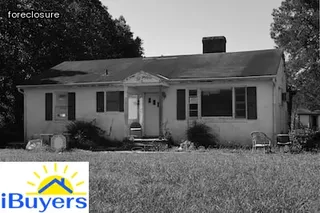Foreclosures in Utah can be a confusing process, but understanding the basics is essential for homeowners. It’s important to understand that foreclosure is a legal process and it varies from state to state.
In Utah, foreclosure starts with the mortgage lender sending out a default notice, which gives the homeowner 30 days to cure the default or face foreclosure. If the default isn’t cured, then the lender will file a complaint with the court and send out a copy of it to the homeowner.
The homeowner then has 21 days to respond to the complaint with an answer or they may lose their right to challenge any of its claims. The court will hold a hearing during which they’ll decide whether or not to grant foreclosure and if so, how long before it takes effect.
Depending on the situation, it could take anywhere from two months up to several years before a home is actually lost due to foreclosure in Utah. Homeowners should also be aware that there are options available like loan modification or repayment plans that may help them avoid losing their home altogether.
Understanding all of these factors can help make navigating through Utah’s foreclosure process much smoother for homeowners.

Understanding the preforeclosure process can be daunting and confusing for homeowners in Utah. Preforeclosure is a term used to describe the period of time between when a homeowner defaulting on their loan and when their home is sold at auction.
During this period, homeowners should familiarize themselves with the various stages of preforeclosure, as well as their rights in each stage. The length of the preforeclosure process in Utah can vary greatly depending on the lender, borrower, and other circumstances, but typically it will last anywhere from five months to two years.
It is important that homeowners understand what to expect throughout these different stages so they can make informed decisions about how to proceed. Homeowners should also consider seeking legal advice if they are unsure of any aspect of the foreclosure process in order to protect their rights and interests during preforeclosure.
Exploring the Utah Foreclosure Process can be a complex and time consuming process for any homeowner. From start to finish, there are a variety of steps that must be taken in order to understand the specifics of the process.
For instance, it is important to know that foreclosure proceedings in Utah are handled by judicial foreclosure. This means that before a mortgage lender is able to take possession of a property through foreclosure, they must first file a lawsuit with the court.
Additionally, it is important to note that while other states may have relatively short foreclosure timelines, Utah’s process can often be lengthy and drawn out due to additional requirements mandated by state law. Homeowners should also keep in mind that they will receive notification from the court if their lender has filed suit against them so they are aware of next steps and their rights as borrowers during the proceedings.
It is also key for homeowners in Utah to research state laws regarding foreclosures as these rules will provide essential information about what happens after a home goes into foreclosure and how long it takes for the entire process to conclude. Understanding these details can help homeowners make informed decisions throughout this difficult experience.

In Utah, foreclosure pathways vary depending on the lender and loan type. The most common path is a non-judicial foreclosure, which typically begins when a homeowner fails to make their mortgage payments.
In this kind of foreclosure, the lender initiates the process by filing a notice of default, which is then recorded with the county recorder's office. Once this occurs, the homeowner has 90 days to repay what they owe or else the property will be sold in a public auction.
Another common path is judicial foreclosure, where the lender files a lawsuit in court against the homeowner for failing to pay their mortgage. If successful, an order of sale will be issued by the court and the property will be sold at a public auction.
It's important to note that whichever path is taken, borrowers have certain rights throughout the process that must be respected by lenders and courts alike.
When a home has gone through the foreclosure process, it is important for the homeowner to understand how long they have to move out. Establishing a timeline for post-foreclosure move out can help the homeowner plan and prepare for their next step.
To start, it is important to note that once a foreclosure sale occurs, the former homeowner no longer has any rights to the property and must vacate within ten days of the sale. The ten-day period allows time for the Utah homeowners to move out all their belongings from their now former home.
Furthermore, if there are any disputes regarding personal items remaining in the house after this period, then legal action may be taken by either party. Additionally, it is important for homeowners to be aware that in some cases, Utah law requires them to request an extension of time from a court before they can legally stay in their home past ten days after the foreclosure sale.
Therefore understanding and establishing a timeline for post-foreclosure move out helps homeowners better plan for what comes next and avoid costly legal fees associated with not adhering to state laws on foreclosures.

When a homeowner in Utah is facing foreclosure, there are some strategies that can be used to try and stop it. The first step should be to contact the lender and try to negotiate a repayment plan.
This may involve offering a lump sum payment, restructuring payments, or extending the loan period. Another option is to apply for a loan modification with the lender.
This could include lowering interest rates or extending the loan term in order to reduce monthly payments. Additionally, refinancing can be an effective way of avoiding foreclosure by getting more favorable terms from another lender.
Lastly, if all else fails, bankruptcy can be considered as a last resort for stopping the foreclosure process in Utah. It's important to understand that filing for bankruptcy does not guarantee protection from foreclosure and should only be done after exploring all other options.
When it comes to foreclosures in Utah, one of the most important things a homeowner needs to understand is the deficiency judgement. A deficiency judgement is a court order that allows a lender to collect any remaining balance on the mortgage loan after foreclosure proceedings have been completed.
If the foreclosure sale doesn't bring in enough money to cover what was owed, then lenders can pursue a deficiency judgement against the borrower. This means that if you are facing foreclosure in Utah, you could still be held liable for any difference between what was owed and what was raised at the auction sale.
In some cases, lenders may also be able to garnish wages or place liens against other assets in order to collect the remaining debt. It is important for homeowners who are facing foreclosure in Utah to understand that even after their home is sold by their lender, they may still be required to pay back the remaining balance on their loan through a deficiency judgement.

Navigating the complexities of foreclosure can be a daunting task for any homeowner. Seeking professional assistance from qualified experts is often a smart choice.
Professionals can help homeowners understand their rights and options during the foreclosure process, particularly when it comes to Utah’s lengthy timeline. They can also provide guidance on best practices to help manage financial obligations, such as budgeting and debt restructuring.
Additionally, they can offer advice on how to work with lenders, including options that may be available to prevent a foreclosure or delay the process. Utilizing knowledgeable professionals is often invaluable for homeowners concerned about navigating Utah’s long foreclosure timeline and other potential pitfalls associated with this difficult situation.
Navigating the foreclosure process in Utah can be a long and trying ordeal for homeowners who have missed mortgage payments. The immediate consequence of such an event is that a homeowner may face eviction, but there are other financial repercussions to consider as well.
Homeowners will owe fees for any delinquent payments and potentially court costs, as well as experience a significant drop in their credit score. This can make it difficult to qualify for another loan or open new lines of credit.
Moreover, a homeowner may be taxed on forgiven debt if they are able to negotiate a settlement with their lender. All these factors must be taken into account when considering the real cost of missing mortgage payments in Utah and the length of time involved before the foreclosure process is complete.

In Utah, a breach letter is an important document in the foreclosure process. It is a notice sent by the lender to the homeowner informing them that they have breached their mortgage agreement and must either cure or reinstate the loan to avoid a sale of their property.
Breach letters are required by law in Utah and must be served at least 90 days before the foreclosure sale date. The letter must fully explain how the borrower has breached their mortgage agreement, including what amounts are due, what deadlines have been missed, and any other applicable information.
The letter also includes information on how to cure or reinstate the loan and what will happen if no action is taken. Understanding this document is essential for homeowners facing foreclosure in Utah as it can help them understand their rights throughout the process and take advantage of available options to keep their home.
Utah has some unique laws and regulations when it comes to foreclosures, so it's important for homeowners to understand the length of the foreclosure process in the state. The process begins with a Notice of Default being issued by the lender, which gives the homeowner 30 days to cure the default or face foreclosure.
After this period, the lender can file a Complaint for Foreclosure in court. Following filing, a hearing is scheduled where both sides present evidence and arguments and a judge will make a ruling on whether or not to grant foreclosure.
Depending on court congestion and other factors, this hearing can take anywhere from several months to over a year. Even after being granted foreclosure, lenders have an additional 180 days to complete the sale before ownership is officially transferred from the homeowner.
To help protect consumers from predatory lending practices, Utah also has specific restrictions regarding how much interest lenders may charge on their loans as well as penalties they may assess upon foreclosure. It's vital that homeowners take into account these laws and regulations when considering purchasing real estate in Utah.

Before a foreclosure sale in Utah can occur, it is important to understand the homeowner's rights when it comes to reinstating their mortgage. Homeowners have the right to reinstate up until 5 days prior to the scheduled sale date.
To do so, they must pay all of the delinquent payments, interest, late fees and court costs that have accumulated since the mortgage defaulted. Furthermore, there may be other fees and expenses associated with foreclosure proceedings that must be paid to reinstate the loan.
Even if homeowners do not have enough money to cover all of these costs at once, they are still eligible for reinstatement as long as they are able to make payment arrangements that are acceptable to the lender or third party mortgage servicer handling their loan. If a homeowner successfully reinsates their loan before the sale date, then any pending foreclosure proceedings will be terminated and the homeowner can resume making regular payments on their mortgage.
When evaluating the redemption period following a foreclosure sale in Utah, it is essential for homeowners to understand their rights and the timeline of events. The redemption period is the amount of time a homeowner has to reclaim their property after it has been sold at auction.
In Utah, this window of opportunity is limited to one year; however, certain conditions may extend that timeframe. If a homeowner chooses not to redeem their home during this period, they will be required to vacate the premises and all claims on the property are relinquished.
Additionally, if the proceeds from the auction are less than what was owed on the mortgage loan or if a third party purchased the home, then an extended two-year redemption period may be available. It is important for homeowners who are facing foreclosure in Utah to familiarize themselves with these timelines and regulations as soon as possible in order to maximize their chances of reclaiming their home or mitigating financial loss.

Evictions after nonjudicial foreclosures in Utah usually occur shortly after the foreclosure process is complete. In order to better understand the length of Utah's foreclosure process and when an eviction may take place, it is important for homeowners to become familiar with the state's laws and regulations.
Generally, a homeowner has one month following the sale of their property to vacate the premises or face eviction. The homeowner will receive some form of notification from either a sheriff or a representative from the lender that they are required to leave the home.
Once this notice has been served, there is no additional time given before legal action can be taken. If a homeowner refuses to leave after being served an eviction notice, then they could be subject to legal proceedings in court which may result in fines or jail time.
It is important for homeowners who are facing foreclosure in Utah to understand their rights and obligations during this process so that they can avoid any potential expensive legal fees or penalties down the road.
According to the Utah Division of Real Estate, the average length of time for a foreclosure process in UT varies depending on several factors. Generally speaking, the typical timeline for this process can range anywhere from three to six months, with some cases taking as long as a year or more.
Homeowners should be aware that there are several steps involved in this process, such as filing a Notice of Default, filing a Trustee’s Sale and issuing a Final Decree of Foreclosure. Understanding how each step affects the overall timeline is critical for homeowners looking to determine how long it might take for their case to reach its conclusion.
In addition to the length of time associated with each stage, other elements such as court delays and personal disputes can also affect the length of the foreclosure process in UT. It is important for homeowners to be aware of these potential delays so they can plan accordingly and work with their lender to ensure that their unique situation is taken into consideration.
The foreclosure process in Utah can take anywhere from a few months to several years, depending on the specific circumstances of the homeowner. The first step in the foreclosure process is typically when a mortgage lender files a Notice of Default against the homeowner. This document informs the homeowner that they are behind on their mortgage payments and sets forth a timeline for them to bring their payments up-to-date.
If they fail to do so within this timeline, then the lender may proceed with foreclosure proceedings. In Utah, lenders must follow specific guidelines and procedures when initiating foreclosure proceedings, which can add additional time to the overall length of the process. After filing a Notice of Default, lenders have up to 18 months before they must file a Summons and Complaint in court.
Once filed, homeowners have 21 days from being served with Notice of Summons and Complaint to respond or contest it in court. If no response is made during this timeframe, then the court could issue an Order for Judgment granting permission for lenders to sell the property at public auction. From this point forward, Utah law requires lenders to wait at least six months before proceeding with an actual public sale.
During this time period homeowners may still be able to negotiate with their lender or work out some other form of loan modification or repayment plan that would avoid foreclosure altogether. Understanding the length of Utah's foreclosure process can help homeowners decide how best to approach their situation and make informed decisions about their financial future.

In Utah, foreclosure is a legal process that occurs when the homeowner fails to make their mortgage payments on time. This process begins with the lender filing a Notice of Default in the county where the home is located.
The Notice of Default must be sent to the homeowner in writing and will include information about how much they owe and how long they have to pay it back. Once this notice has been filed, the lender may also seek an Order of Sale from a court.
This order gives them permission to sell the home in order to recover their money. After the Order of Sale is granted, a public auction will take place where bids are placed on the home.
If no one bids higher than what is owed on the loan, then the lender will become owner of the property and can then proceed with evicting any tenants living in the home. It’s important for homeowners to understand that this whole process can take some time; depending on how many steps are involved and how quickly each step is completed, it could take anywhere from several months up to two years.
Homeowners should also be aware that if they do not pay off their debts within this timeframe, they could potentially lose their homes entirely.
In Utah, homeowners who are facing foreclosure may be wondering how many missed payments it takes before they will face foreclosure proceedings. According to the Utah Foreclosure Prevention Taskforce, three missed payments on a mortgage loan can result in a Notice of Default being filed with the county recorder's office.
This notice is then sent to the homeowner, giving them 90 days to catch up on their mortgage payments or enter into a payment plan agreement with the lender. After these 90 days have passed without action from the homeowner, an auction date is set and the property is sold at public auction if no agreeable solution is reached between the homeowner and lender.
It's important for homeowners to understand that this process doesn't happen overnight - it can take several months before all necessary legal steps are taken and a foreclosure sale occurs. Knowing how many missed payments it takes before foreclosure in Utah can help homeowners better prepare themselves for any potential issues that may arise with their mortgage loan.
If you are a homeowner in Utah, understanding the timeline of the foreclosure process is key. The length of time it takes to go into foreclosure in Utah depends on many factors, such as how many months behind you are on your mortgage payments.
Generally speaking, if you are two or more months behind on your payments and have not made any arrangements with your lender to catch up on them, you may be facing foreclosure. In addition to being more than two months behind on payments, lenders also require that homeowners receive several notices from their lenders before a property can be foreclosed upon.
These notices include a demand letter and a notice of default, both of which must be sent giving homeowners time to bring their accounts current or make other payment arrangements with their lender. Furthermore, borrowers may have the option to use other alternatives such as loan modification or short sales in order to avoid foreclosure altogether.
It's important for homeowners in Utah to pay close attention their financial situation in order to avoid this stressful process.